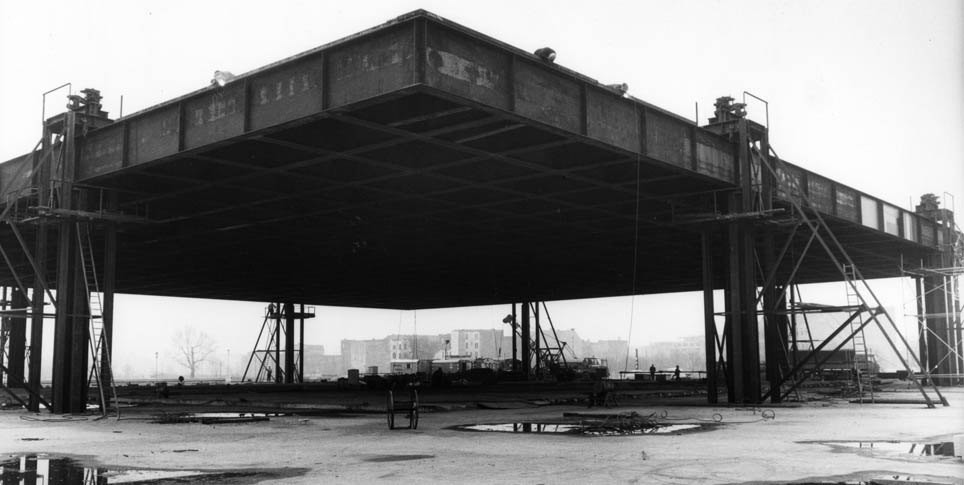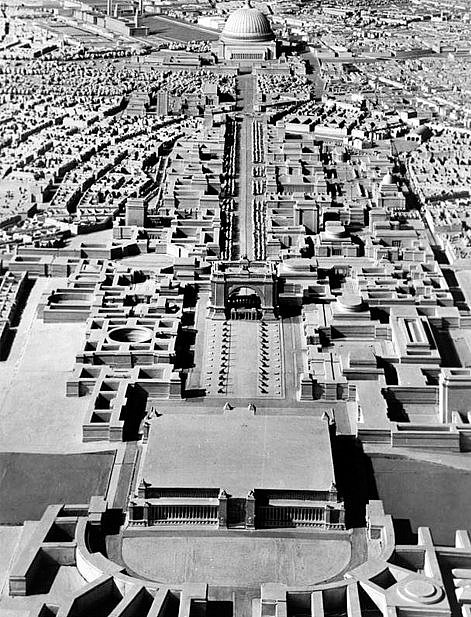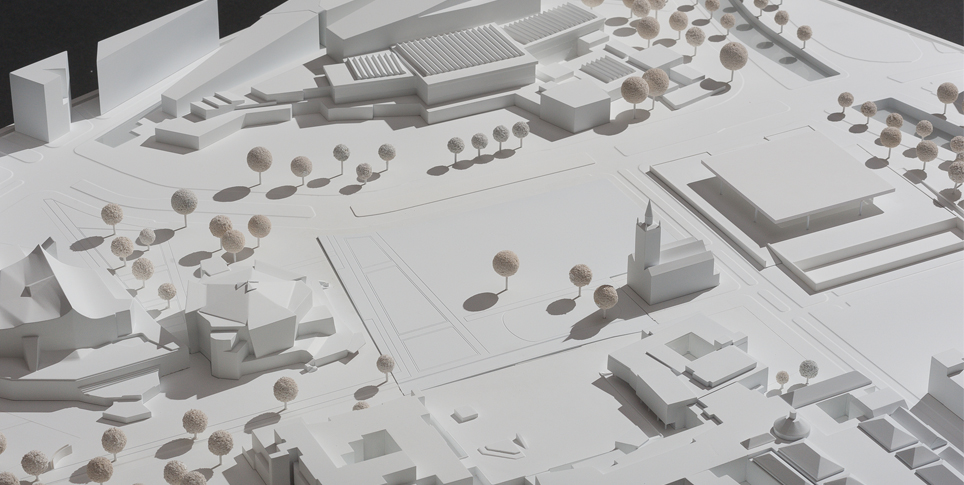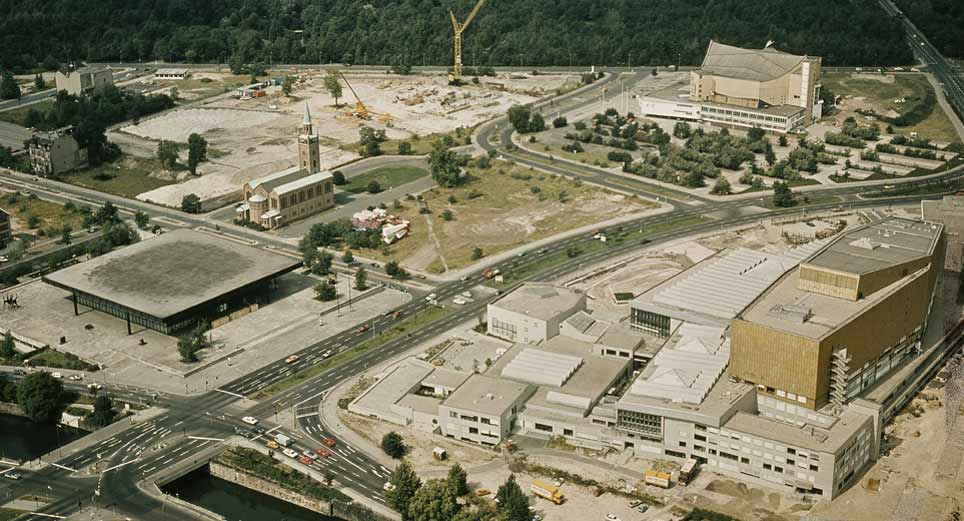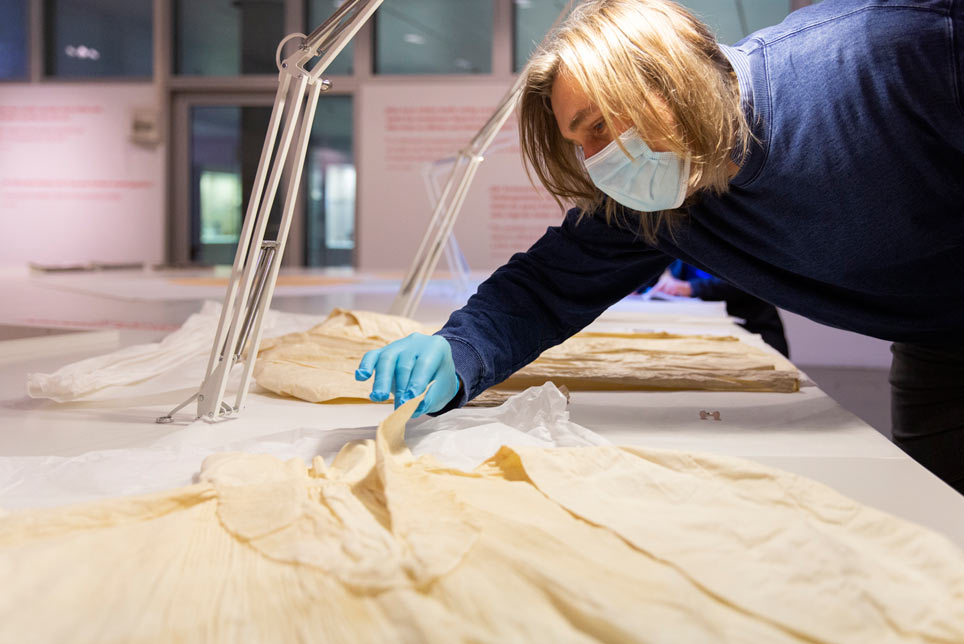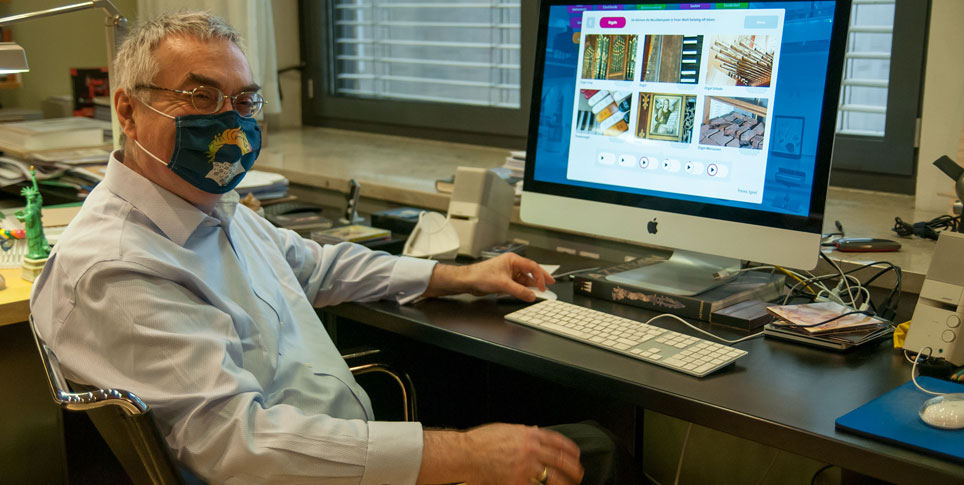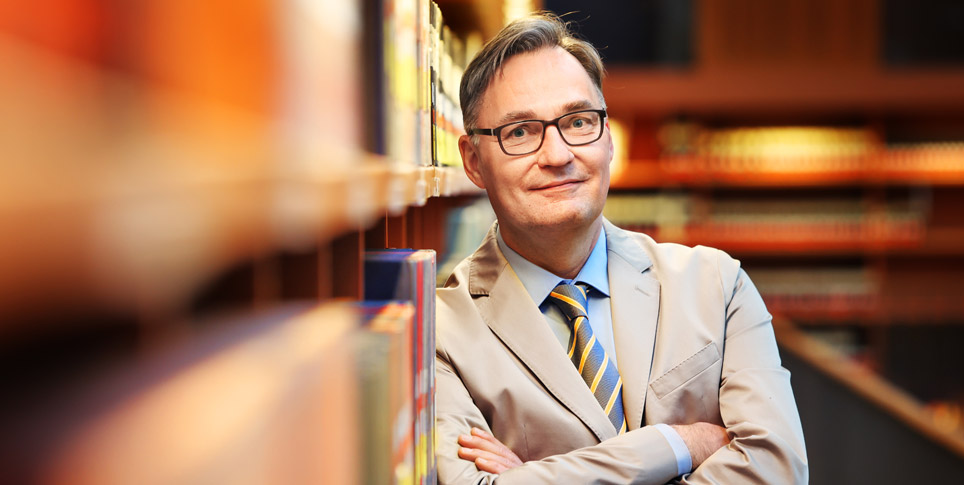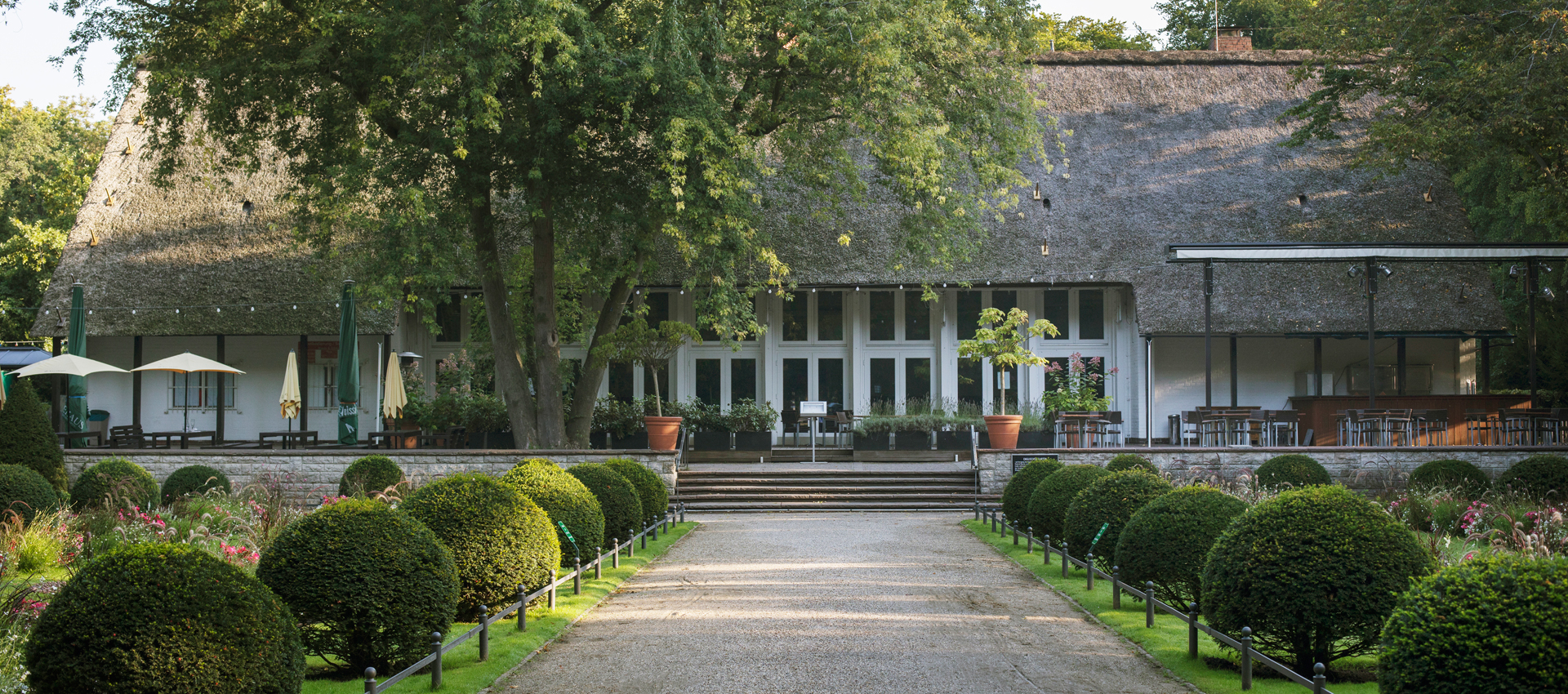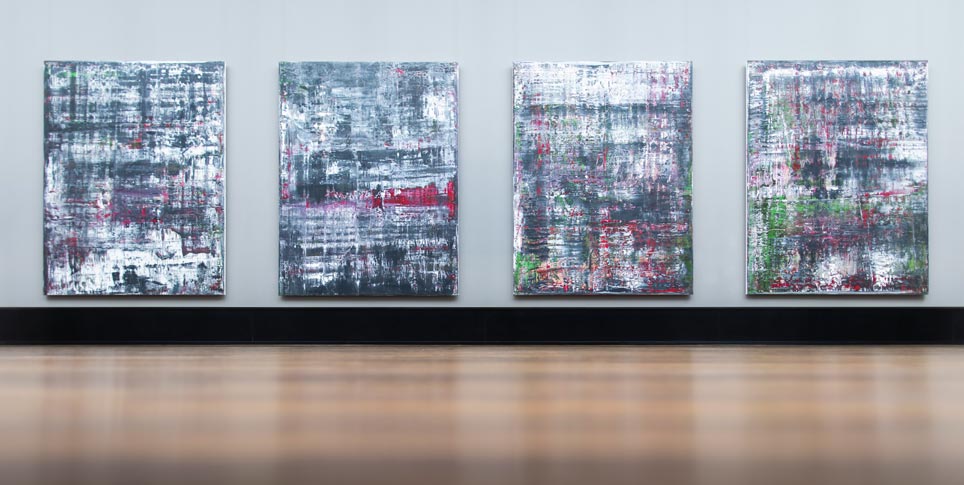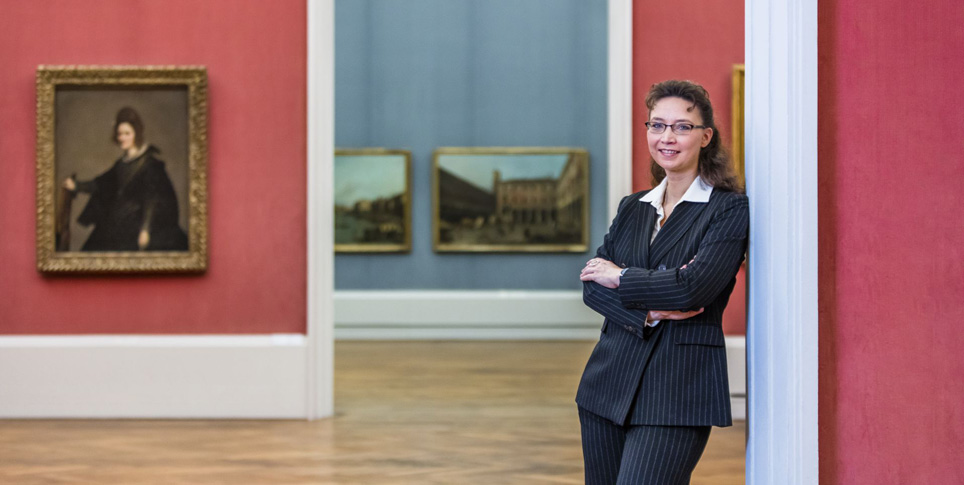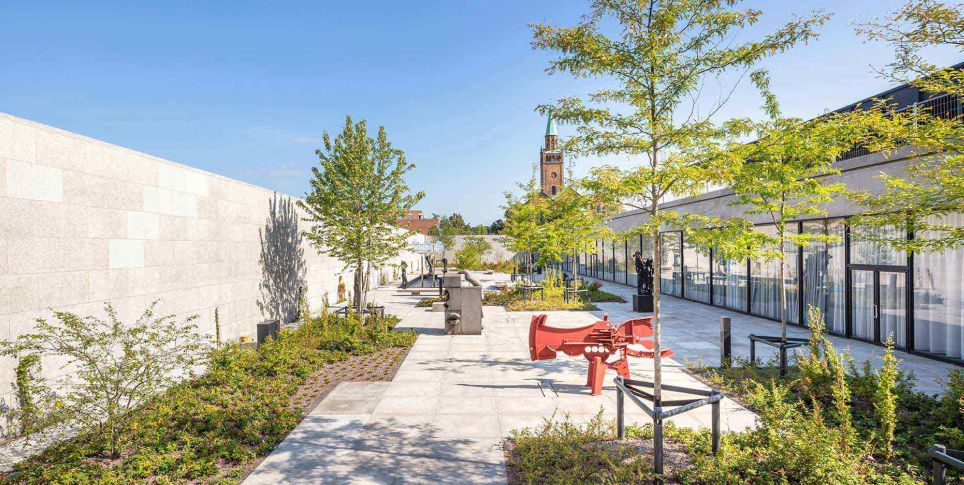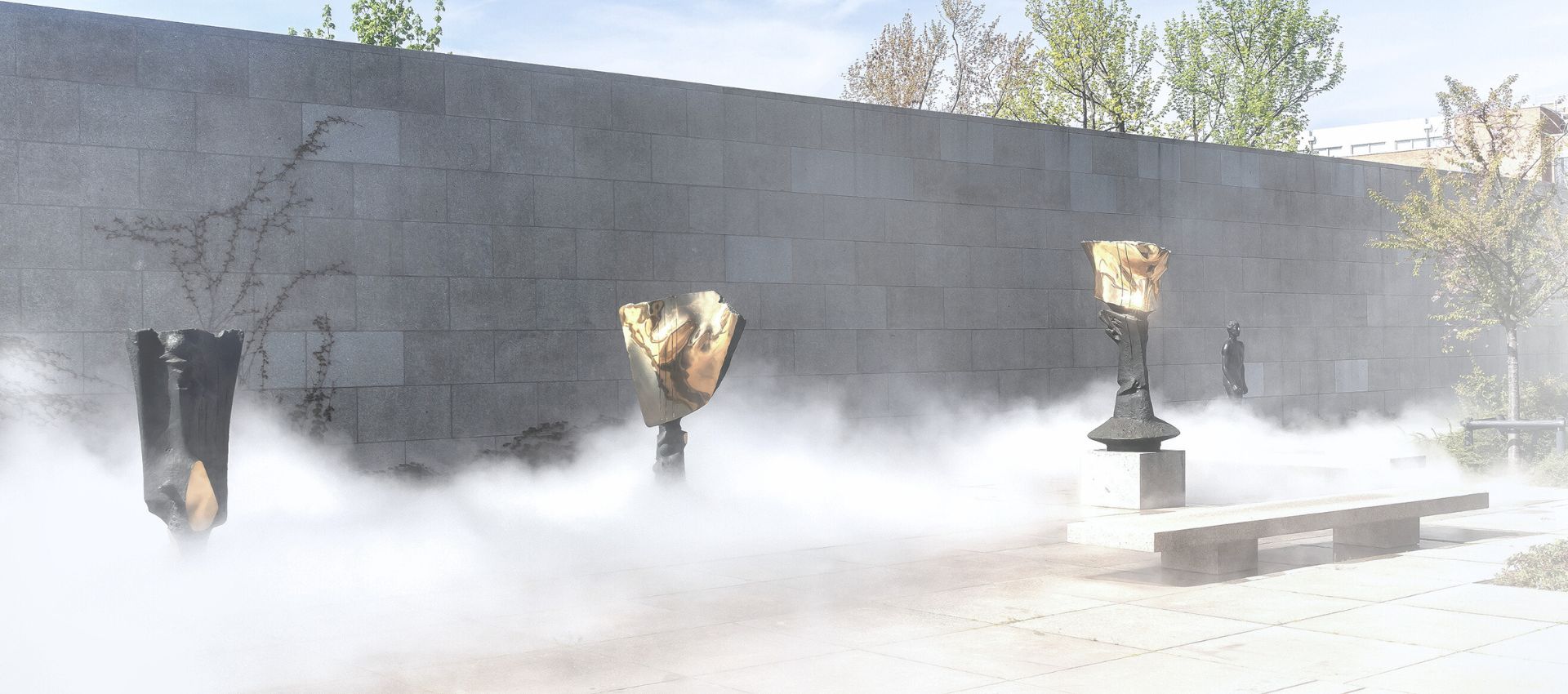Not perfect, not cohesive, not vibrant – the word “not” is often used in the context of the Kulturforum, showing that there is room for improvement. There were plenty of visions about what to do with it. How the Kulturforum came to be what it is.
The current image of the Kulturforum includes Hans Scharoun’s Philharmonie and Mies van der Rohe’s Neue Nationalgalerie – and beyond that, a concrete wasteland. The two icons of modern architecture seem to rule the Kulturforum – and their contrasting attraction is what continually aborted efforts to create a coherent ensemble at the Kulturforum. Built without any real urban concept, the two magnificent solitary structures are both landmarks of the new democratic beginning of West Berlin after World War II, since the Kulturforum was built on the ruins of the Tiergarten district and the beginnings of Germania, Albert Speer’s megalomaniac vision for the capital city of the Thousand-Year Reich. In the second half of the last century, the land between Tiergartenstrasse and Landwehrkanal, Potsdamer Strasse and Bendlerblock also proved to be a projection surface for the creative energy of urban planners and architects. They developed a series of urban planning visions for the Kulturforum that corresponded to various eras in the history of architecture, which were only realized in part. The current state of the Kulturforum is the result of this collection of incomplete visions. It is an architectural wasteland strewn with seemingly unconnected cultural facilities, an imperfect and incomplete location.
These incomplete visions from the past are the Kulturforum’s geological layers. They are the basis for unrealized plans to further develop the Kulturforum and turn its imperfection into an archeological site where 20th-century German architectural history can be read.
For the Stiftung Preussischer Kulturbesitz (Prussian Cultural Heritage Foundation), building the new museum for 20th-century art will open a new chapter for the Kulturforum, which will hopefully end with nothing less than the continuation of architectural history on this site into the 21st century.

Eine der Architekturikonen des Kulturforums: Die unvollendete Neue Nationalgalerie (1967)© SMB, Zentralarchiv
From a bourgeois suburb of villas to a field of ruins
With the construction of St. Matthäus Church in 1846 by Friedrich August Stüler at the latest, the Tiergarten district became established as a suburban residential area for Berlin’s upper middle class. Around Matthäikirchplatz, between Tiergartenstrasse and the Landwehrkanal, a preferred residential area was created that was marked by its dense building and historicist architecture. Berlin’s economic and intellectual elite were at home there from the late 19th century onward; in the early 20th century, the avant-garde moved in. Today, the only remaining structures from that era are St. Matthäus Church and Villa Parey, which was integrated into the Gemäldegalerie (Old Master Paintings).
After World War I, the character of the Tiergarten district changed when many embassies and consulates moved in. In 1937, as part of Nazi capital-city urban planning, it was officially declared the Diplomatenviertel (Diplomat’s District). Brutal confiscation of property and massive demolition soon eliminated large parts of the district. The north-south axis of Albert Speer’s “gigantomaniac” metropolis, Germania, was supposed to cut through the district as a 120-meter wide boulevard. It was an integral part of Hitler’s architect’s vision for the capital of the Thousand-Year Reich. At the intersection with Potsdamer Strasse, the north-south axis was to be expanded to form the Runder Platz, a monumental plaza bordered by ostentatious Nazi buildings.
In 1938, the construction of the Haus des Fremdenverkehrs (House of Tourism), which was later demolished to make way for the Staatsbibliothek (State Library), was the first step in the realization of a ruthless vision. Nazi destruction as part of making room for Germania was not carried out to such an extent anywhere else in Berlin. Blanket bombing during World War II completed the destruction of the former residential district of Berlin’s avant-garde, leaving behind a wasteland whose desolate genesis has not been easy to escape.
Modernism must make amends: Scharoun’s urban landscape
With the construction of the Philharmonie on the bulldozed field of ruins in the early 1960s, the district began its development into one of Germany’s major cultural locations. The Philharmonie was originally supposed to be constructed in Wilmersdorf, but when Hans Scharoun won the architectural competition in 1956, he pleaded for a more central location with a view towards reunification in the future. The spectacular, organic Philharmonie ended up dominating the sparsely planted open area as a solitary structure near the freshly built Berlin Wall. The plan was to build a West Berlin version of Museumsinsel (Museum Island) focusing on modern art on the site. The project received a major boost in 1964 with the construction of the Neue Nationalgalerie based on plans by the architect of the century, Mies van der Rohe. The building had been planned by the Senate of Berlin, but just a few months before laying the cornerstone the Stiftung Preussischer Kulturbesitz decided to take it over and use it as an exhibition site for the collection of the Nationalgalerie.
This is how two landmarks of modern architecture happened to be built on the site, but not according to a sustainable urban planning principle. Two isolated objects that were oriented to the principle of functionalism but mainly served as a kind of architectural de-Nazification since the absence of an overall concept was meant to be a negation of the previous planning for Germania.
Scharoun subsequently delivered an urban landscape concept. Although he reserved the area as a diplomatic and cultural quarter and part of a new “cultural zone” in his submission to the capital city competition in 1957, his first detailed plans for the Kulturforum only appeared in 1964, parallel to his submission to the competition for the Staatsbibliothek. This is the first time that the term “forum” was used to designate the area west of the Staatsbibliothek. Scharoun tried to unite it with the concept of an “urban landscape” and formulated it in detail in the submission.
Scharoun’s vision of an urban landscape is one climax in the planning history of the Kulturforum. Along with the Staatsbibliothek, the existing Philharmonie and St. Mätthäus Church, and the planned Neue Nationalgalerie, Scharoun added the Kammermusiksaal (Chamber Music Hall) and a guest house for the Senate to the empty center of the “field of tension” between the two iconic solitary structures.
The concept of an urban landscape must be understood as a structural analogy to natural elements, forces, and structures. Scharoun compared the elongated form of the Staatsbibliothek to a mountain ridge, giving his buildings a geographical dimension or the form of a natural landscape. In Scharoun’s vision, the Kammermusiksaal becomes a hill, the guest house terraces, and Potsdamer Strasse a valley.
After Scharoun’s death and the completion of the Staatsbibliothek, his plans for the Kulturforum were developed further by Edgar Wisniewski, who had been involved in the designs. From 1979 to 1987, Wisniewski built the Staatliches Institut für Musikforschung (State Institute of Music Research), the Musikinstrumentenmuseum (Museum of Musical Instruments), and the Kammermusiksaal, which ended up having a much larger volume than Scharoun had planned.
The museum locations were already indicated in the model from 1964 and were later specified in a competition, which Rolf Gutbrod’s complex cluster design won in 1967. The plans of the building containing the Kunstgewerbemuseum (Museum of Decorative Arts), Kupferstichkabinett (Museum of Prints and Drawings), and the Kunstbibliothek (Art Library) were modified and the Brutalism-style building was built between 1978 and 1985. It attracted so much public criticism that construction was stopped. After a new competition, the architectural offices of Hilmer & Sattler were commissioned to build the Gemäldegalerie. In 1984, Heinz Mack built a Piazzetta made of granite near the museums. Its downward slope makes it more of a barricade to the museum complex than a connection to it.
At that time, the model of a functional city that Scharoun had followed was being thoroughly called into question. As a result, Scharoun’s overall spatial concept, which was supposed to relate the buildings to each other, was never completed.
The rejected designs
The Internationale Bauausstellung (IBA) was held in Berlin from 1979 to 1987. The Senate Administration invited six internationally renowned architects to “complete the Kulturforum in the spirit of Scharoun.” The design by Hans Hollein, a Viennese architect, was chosen to be implemented. Hollein wanted to extend Matthäikirchplatz to Potsdamer Strasse, shield it with a colonnade, and create a border with a “city monastery,” a “tower,” and a canal on the other side. Hollein’s plan was never carried out due to strong opposition from the Scharoun Society.
In 2005/06, the Senate Department for Urban Development and Housing presented its master plan to further develop the Kulturforum based on Scharoun’s ideas. In the plan, St. Matthäus Church is once again located on a structurally defined square only accessible to pedestrians. A forecourt with a colonnade of pillars, reminiscent of the classicism of Nazi architecture, was planned to replace the Piazzetta as a monumental entrance to the museums. Two new buildings between the Neue Nationalgalerie and the Philharmonie were planned to finally complete the Kulturforum. After a change in leadership in Berlin building policy, this plan was also rejected in 2007.
But all’s well that ends well: on October 27, 2016, the Stiftung Preussischer Kulturbesitz unveiled the winning design by Herzog & de Meuron in the competition for the new Museum des. 20. Jahrhunderts (Museum of the 20th Century): an archetypal building that gives the Kulturforum structure and potentially has what it takes to be an icon of 21st century architecture.
A New Museum at the Kulturforum
The website for the new museum building at the Kulturforum is following the progress of design and construction work up until the opening. more
